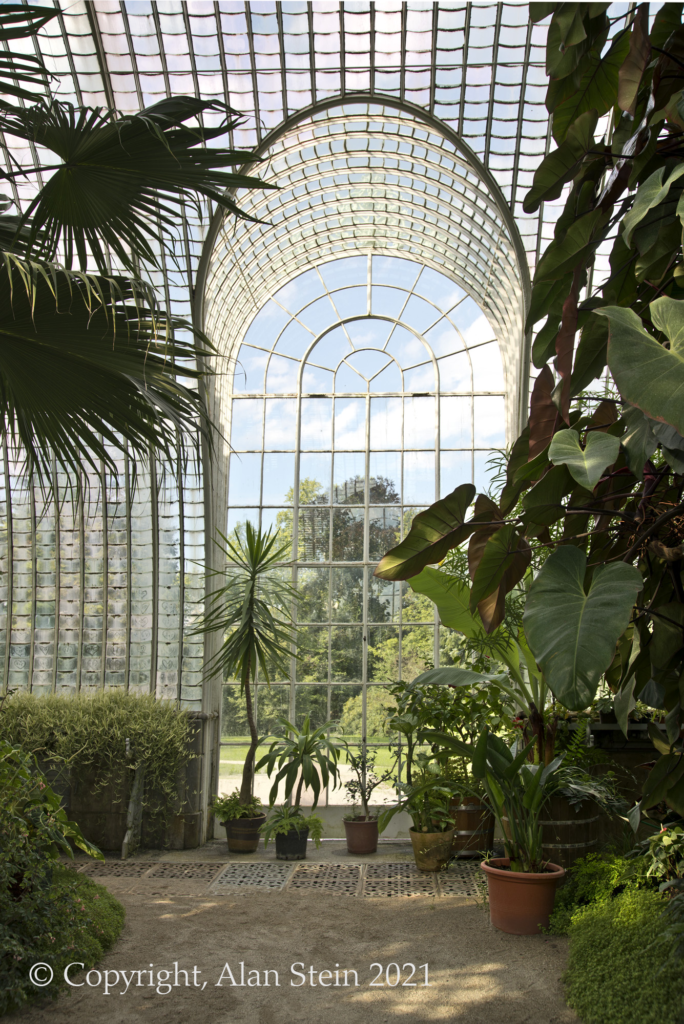The Chateau Lednice Conservatory at Liechtenstein Castle in the southern area of Moravia in the Czech Republic is another example of the country’s superlative glass conservatories. When Duke Alois II, the Prince of Liechtenstein decided to add a conservatory during the remodel of his castle in 1840. He looked to England for the design, choosing English architect, P.H. Desvignes, to create the project which was built in the avant-garde Style of John Claudias Loudon. Desvignes began as an engineer who later studied at the Royal Academy of Arts.
Desvignes created the system of semi-circular arches ending in quarter spheres that give the conservatory a particularly graceful look as well as providing much of the building’s rigidity, eliminating the need for the diagonal supports so often seen in glass conservatories. The result is a sense of openness even as the glass protects the lednice interior from weather of all sorts.
Famous for its many details, this conservatory leans on oriental designs. For example, Persian rugs inspired the design of the ventilation grilles while the capitals of the cast-iron pillars are based on banana leaves. Topped by a pagoda-like ventilation structure, the total effect is a bit like an exotic oriental garden.

Also known as the Lednice Orangery, this glass and cast iron conservatory was the first stand-alone glasshouse in Europe. Small wonder this lovely conservatory was designated a Conservatory Heritage Foundation site. A refurbishing of the structure revealed that in addition to cast iron, forged iron was used in some of the decorative pillars.
The floor of the conservatory is another marvel. The path that leads one through the plantings is actually constructed of cast iron grates which allow heat from a heating system to warm the interior.
An ideal destination site for conservatory lovers traveling to the Czech Republic, the castle with its glass conservatory is set in the midst of an extensive landscape park or region of over 109 square miles. This huge park is designated as a ‘cultural landscape,’ an official term of World Heritage Sites which defines the area as “a landscape designed and created intentionally by man.” It stretches roughly between the Lednice and Valtice areas of the South Moravian Region, near Břeclav in the Czech Republic, providing much to explore for any visitor.
While you’re exploring, let your mind soar as you explore both the small and large details you dream about having in your own home! Your home can have the same atmosphere as the Chateau Lednice with designs and details that relate back to this century-old work of art.

